Rock Products Presents The 2023 Quarry And Aggregates (Q&A) Forum: Industry Thought Leaders Open Up About The Aggregates Industry, Market Conditions, Artificial Intelligence And More.
By Mark S. Kuhar and Josephine Patterson
Each year, Rock Products reaches out to industry thought leaders to get their take on the aggregates industry. In this feature, manufacturers and service providers comment on the aggregates market, today’s challenges and what the future holds. – Ed.
Participants
- David Boardman, founder and CEO at EveryPoint.io and Stockpile Reports
- Russ Burns, sales director, Terex MPS
- Tod Eberle, vice president of sales, Polydeck
- Ian Edwards, senior director – responsible for global sales, MAJOR
- Johnnie Garrison, vice president of sales, Superior Industries
- Scott Holub, manager – OTR technical services, BKT
- Jason Hurdis, senior market professional, Caterpillar
- Alex Kanaris, president, VDG
- Peter Kilmurray, vice president of sales at Haver & Boecker Niagara’s North American operation
- Mark Krause, managing director – North America,
McLanahan Corp. - Josh Swank, vice president of sales and marketing, Philippi-Hagenbuch
- Joe Teague, vice president of sales, CDE Group
- Pierre Villere, president and senior managing partner, Allen-Villere Partners
Aggregates producers are reporting flat production, but good business as prices have increased. What are you hearing from your customers?
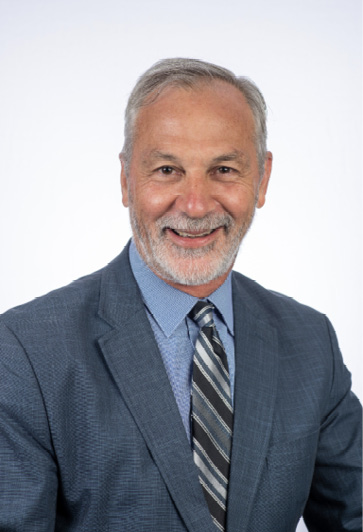
MARK KRAUSE: We do hear of plateauing production and sales levels as well. Let’s point out that we have plateaued after a few years of some pretty steady and solid growth. Yes, we always want to project growth and higher levels, but for me flattening out at this level is a very positive sign for the health of our industry. With all of the headwinds in the economy from higher interest rates, housing sales slowing, oil prices and all to be able to hold at these levels speaks to the positive near term for our industry. It also appears as if mergers and acquisitions will continue in our marketplace. Reinvesting in operations and adding new markets will be a place where companies will use some of the profits they are earning today.
The Infrastructure Investment & Jobs Act (IIJA) monies are coming into the market at a time that it could use a little boost to offset some of the other headwinds. This would be a good time to thank our elected officials for approving this bill, remind them that it needs to be funded and also remind them that this bill will expire in a few years and how critical it is we get another bill approved with proper funding.
JOHNNIE GARRISON: In our conversations with customers, we’re observing similar trends in our business. Like us, producers have expressed the challenges of meeting the robust demand and volume requirements in the current market. The struggle to keep pace is often attributed to workforce limitations, lead time constraints and equipment availability. With more people, we both would have been able to produce more.
ALEX KANARIS: We generally hear the same. Basically, some producers report flat production and some report a decline in production.
PIERRE VILLERE: Our clients are all saying the same thing: volume is flat, but prices and margins, and therefore profitability, are all up. The AVP Pulse Index, which is put out jointly by Allen-Villere Partners and Rock Products, is up 2.9% for the year. I get asked what the trend line in the index means: it represents our proprietary algorithm, which tracks the direction of our industry on a rolling 36-month basis. Simply put, the line defines the direction of the industry, whether it is trending up or down. After a strong start in 2023, the Index is trending down in the last few months but is still positive for the year. This is driven in part by the new home segment of our industry, as well as builder and construction sentiment. Overall, we are much higher than we were three years ago. I believe this trend will flatten over the next six months, as the strength of the IIJA money combines with anticipation for falling interest rates.
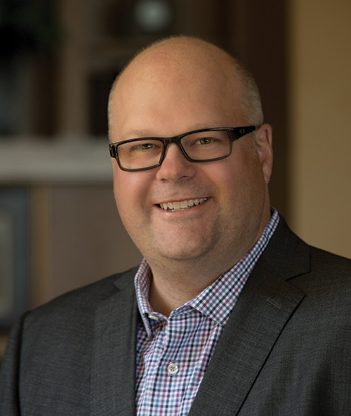
JOSH SWANK: We saw demand for aggregates remain strong throughout 2023. This has been evidenced by a steady increase in sales of our Autogate tailgates and sideboards. For us, this is a direct indicator of growth in demand for aggregates as it shows that producers are looking for equipment to help them be as efficient as possible to meet that growing demand. On the other hand, we have heard that the construction materials market is in a downward trend. However, producers remain optimistic due to the focus on infrastructure with the recent legislation.
JOE TEAGUE: I am hearing optimism for 2024. However, as the quality of material deposits decline, and more regulations are being passed, producers are looking for more efficient and cost-effective ways to produce high quality products.
JASON HURDIS: Most customers have indicated that production of general construction materials is flat while others have stated up slightly but within small percentages above 2022 levels. This mirrors the new housing start, road maintenance and general building construction industry stagnation currently in the market. Many customers have stated that production for specialty aggregates such as frac sand, high calcium limestone and federal waterway rip-rap type materials are experiencing higher demand and higher sold prices compared to 2022.
SCOTT HOLUB: Many of our customers have said that business is up from the pandemic but flat (or even a little down) from last year. They are hopeful that the passing of the infrastructure bill will bolster business.
PETER KILMURRAY: In 2023, there was a slight decrease in the production and shipping of total construction aggregates within the United States, as compared to 2022. However, the fact that this was a dip and not a dive reflects the resolve of aggregates operations seeking creative solutions to industry challenges.
For instance, many are turning to equipment maintenance to help maintain uptime and production while reducing costs. At Haver & Boecker Niagara, we understand the importance of service and support. With each customer, we strive to serve as an extension of their maintenance team with our thorough PROcheck service approach and cutting-edge diagnostic tools.
IAN EDWARDS: In 2023, economic uncertainty was a major concern for everyone. Things like inflation and changing interest rates had a big impact on the overall industry this year.
At MAJOR, we regularly focus on two key parts of the aggregate industry: the growth or decrease of private and government infrastructure sectors. Projects and investments in infrastructure can hugely affect our industry, and in 2023, we’ve seen a lot of movement in this area. I’m confident many companies have felt the impact of these changes in public policy and funding.
TOD EBERLE: I think most of our customers are cautiously optimistic about next year. Most people are forecasting flat because we just don’t know which way the economy will lean.
RUSS BURNS: As customers strive to become more efficient and reduce downtime, we continue to see a good deal of investments in capital equipment from many customers. There has also been an increased demand in products that provide versatility. This allows customers to adjust production as the demand for aggregates change, without an increase in complexity. Customers are pursuing equipment that is easy to operate and maintain to achieve their targets. With many customers wanting to produce more, in less hours, with fewer skilled requirements and less downtime, we see opportunities for our products.
How is business for your company these days?
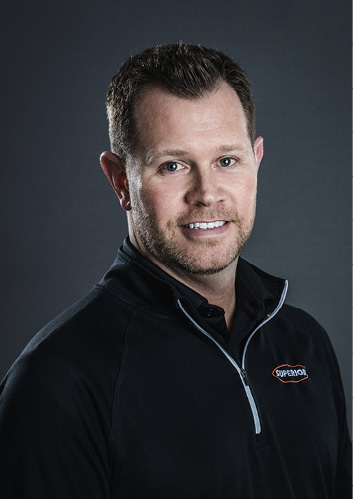
GARRISON: At Superior, we’re proud to share that 2023 will be a record-breaking year for our company! A key factor in this success is the substantial growth in market share for some of our newer processing products like crushing and screening equipment. Furthermore, our core conveyor products have surpassed all previous records. This success can be attributed not only to the prevailing market demand but also to the unwavering commitment and expansion efforts of our dealer network. Their dedication has played a crucial role in positioning Superior for great achievements. We are optimistic about sustaining this momentum.
KANARIS: Compared to 2022, our overall business is 8% less. However, we had a 2% increase with our drum motor product line we manufacture specifically for the mining and aggregate industry.
HOLUB: Business in 2023 is strong, though the year may still end a little below 2022. In 2022, we saw dealers loading up on inventory after struggling to get product in 2021 from low production during the pandemic. As a result, we had tremendous growth in 2022 that will be difficult to recreate.
SWANK: Last year was one of our best years in company history and, while we would have loved to break that record in 2023, things did slow down a little. I still consider 2023 to be strong, and, as we round out the year, we could be surprised at how close we come to seeing 2022-type trends. Looking forward to 2024, we are optimistic that it will bring another strong and steady year.
TEAGUE: At CDE, we’re continuing to grow our brand and expand our footprint in North America. With the addition of four new Preferred Partners, and more to be announced, we are poised to continue experiencing substantial growth in our natural processing and waste recycling business segments next year.
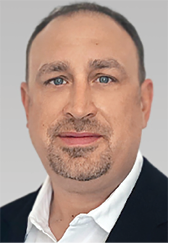
BURNS: Demand is very good for our three legacy product lines. We have a long history of providing reliable, cost-effective solutions to customers in need. Our portable plant offering continues to be in high demand as we’ve focused our designs to maximize production and ease maintenance. We’ve also seen increased demand with our static business from customers looking to upgrade existing equipment or increase production. Our distributor network has also made investments in stock equipment as we look to have the right equipment availability at the right time for our customers.
KRAUSE: Much like the aggregate producers, we too have seen a flattening of our sales. We are predicting that 2024 will be much like 2023 with strong levels across all areas of our businesses with final numbers being close to 2023 numbers. Again this means we have plateaued at a very solid level. We will enter 2024 with a strong backlog which will carry us through the first half of the year. Even though it is an election year, where very little seems to happen, IIJA funds will help drive our business in a positive direction for the remainder of 2024. With steel prices having come down as well as shipping pressures and higher costs retreating, our business is poised for a solid 2024. Much like any year some geographic areas are doing better than others, but being a global company allows us to shift resources from less busy areas to higher level areas.
BOARDMAN: Stockpile Reports continues to experience steady growth within the aggregates and other bulk materials industries. Now that drone fever has faded companies are less enamored with technology and more focused on achieving business results. That typically translates to striving for more accurate inventory through more frequent counts (think weekly and daily) to drive better outcomes through automation and optimization.
EBERLE: Polydeck is doing very well. Our customers ramped up production after the pandemic and we have shared in their success.
Are you still experiencing labor issues at your company? What are you doing to address this?
BOARDMAN: Labor issues in the tech industry have improved – especially around computer vision. For a few years Meta (formerly Facebook) was hiring anyone who could say the words “computer vision” for unbelievable salaries and benefits. They literally raided most of higher education and start-ups for two years. Now that the over hyped Metaverse is falling flat and AI has become the shiny red ball for Silicon Valley we see more candidate flow.
EBERLE: Labor at all levels is a challenge and will probably be the new norm.
BURNS: We have been very successful in recruiting talent at all of our sites this year. We’ve spent a good deal of effort promoting our culture and values. We’ve utilized a number of social media sites and local outlets to increase our reach and touch points with prospective candidates.
GARRISON: While we have observed an improvement in labor availability over the last several months, particularly as other manufacturing segments have slowed down, addressing labor challenges remains a priority for us. We’ve successfully onboarded hundreds of additional personnel, but still need more! Recognizing the significance of long-term efficiency, we’ve made substantial investments in automation and robotic welding technologies. These initiatives not only contribute to overcoming immediate labor shortages but also position our company for enhanced production capacities. By combining workforce expansion with technological advancements, we are proactively mitigating labor issues and fortifying our operations for the future.
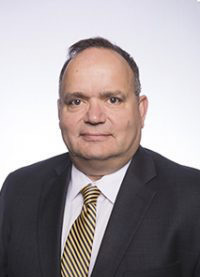
KANARIS: In the first quarter of 2023, we had some labor shortages. We had to review the hourly rate scale and the benefits to our employees, and at this time, the labor issues have diminished.
SWANK: While we’ve had some labor challenges, our biggest challenge has been with the availability and cost of steel. Rising demand has of course led to increasing steel prices. Combine that with a rise in the cost to deliver steel to our manufacturing facilities, and the challenge compounds. To combat it, Philippi-Hagenbuch has broadened our supplier base and has gotten creative to meet producers’ demand for customized haul truck equipment without sacrificing quality.
HOLUB: BKT never faced labor shortages during Covid, though we do have some openings in our U.S. division and are actively pursuing the right candidates. Many of our customers are experiencing labor shortages, especially on the technician side. To resolve this, they are focusing on training and promoting from within.
KRAUSE: From a manufacturing perspective we have held our own with employment levels and overall capacity. We had started our own apprenticeship programs to make sure our people had the skills we need like welding. That program has worked so well we are continuing it and adding other skills training too.
The area where we are struggling to find people is in the area of field service. This role takes a general knowledge of many aspects including application and maintenance. In addition, this is a role that requires travel and being away from home. Finding people with this kind of skillset who are willing to be road warriors has been our biggest struggle. To help in this area, we are having technicians who live and then work in a certain territory. Previously we had them based at our factories in Pennsylvania, Tennessee and Iowa. Now living in the field, the travel can be less and they can be home at night more often.
What problems are you solving for aggregates producers? Give an example of how your equipment has made or can make a difference at an aggregates operation.
KANARIS: Reducing operating expenses and the lack of maintenance personnel are two of the issues affecting aggregate producers. Our latest design VDG Drum Motors require no maintenance for 80,000 hours of continuous operation. The new generation of VDG Drum Motors withstands aggressive shock loads, is far more durable, has the longest service life, and has increased performance in harsh or wet environments compared to a traditional motor and gearbox mounted externally to the conveyor frame. The VDG Drum Motor has all drive components, including the electric motor, gear reducer, and bearings enclosed and protected inside the drum, and operates at 96% mechanical efficiency. With no wear parts and no required maintenance, the VDG Drum Motor reduces maintenance and operational costs.
TEAGUE: U.S. producers continue to see a decline in the quality of their sand deposits. As their material processing becomes more challenging, this is where CDE has found its niche. With advanced technology we not only are able to produce high quality spec material from less desirable feed stock, but also able to produce more efficiently. A great example is our EvoWash equipment which is used as a replacement for antiquated technology, such as the screw/classifier processing. Most sand screws lose an average of 10% sellable product to the waste ponds. The loss of material is then compounded when you factor in the cost of cleaning out the ponds. The EvoWash screens and separates the smaller sand and gravel fractions through an integrated high-frequency dewatering screen, sump and hydrocyclones which provide unrivalled control of silt cut points and eliminate the loss of quality fines with significant commercial value. As water scarcity and restrictions become more of an issue, there are many times that we will introduce our AquaCycle water treatment technology to these circuits. This allows producers to recycle 95% to 98% of their water and eliminate the need for ponds.
EDWARDS: Environmental concerns have pushed the aggregate industry to focus more on sustainability. Many companies have had to adjust to stricter regulations, working to reduce their environmental impact. Because of this, we have seen a shift in where companies were spending or needed to spend, reducing their overall spending budgets for actionable products.
Increasing operational efficiency is one key approach toward this goal, which requires a cohesive relationship between a plant’s workforce and its equipment, among other factors. Screen media selection plays a vital role in this configuration and high-vibrating screens, in particular, can increase the sustainability of a plant’s operations.
The high vibrations of MAJOR’s FLEX-MAT, for example, creates a self-cleaning action that virtually eliminates pegging and clogging across the top and bottom decks that arise from caked-on material and jammed particles. This means that material processing can proceed with fewer resources needed, which in turn reduces operational costs while improving efficiency.
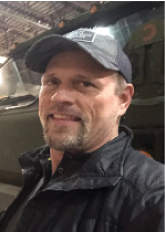
HOLUB: To solve and prevent problems for aggregate producers, we offer extensive training and operational site studies. We had gone into an aggregate site that was getting poor tire performance. We conducted a tire/TMPH study as well as a haul road study. After that, we made several recommendations on proper tread design and tire compound choices. After educating the site on our conclusions, their tire life increased by 30%.
KRAUSE: Two main areas where we are helping producers today are fines recovery/maximum yield of product with minimal waste and recycling water. Recovering fines and getting them into the product piles and not into ponds provide many benefits. First is that by producing more tons per hour by capturing the fines into product lowers the cost per ton of the operation. Same cost, more tons equals lower cost per ton. Another way to look at that is greater tons produced per man hour. In addition the site saves money by not having to clean out the ponds as often as we send less to the ponds every hour. Producers can capture fine material before it goes to a settling pond by using equipment that separates the fines from the process water and dewaters them to a dry, conveyable and stackable form. By utilizing fines recovery, producers can create an easy-to-manage, potentially saleable product from the fine material byproduct, as well as immediately reusable process water that can be recycled back to the beginning of the wash plant. There are numerous sways to recover fines from a simple scavenger system (sump, pump, and cyclone) up to using thickeners and filter presses.
With McLanahan Thickeners, producers can recover up to 90% of their water for reuse to create a more sustainable operation. They are ideal for sites where water is scarce or expensive. McLanahan Thickeners also reduce the amount of material reporting to waste. This allows producers to reduce the size of their settling ponds or tailings storage facilities, which can be expensive and dangerous to maintain, cause permitting issues and potentially cover mineable reserves.
BOARDMAN: The problems we are solving have shifted significantly from reducing inventory write-offs to improving operations and logistics. Continuous measurements from installed cameras at ready mix plants are being used to automate dispatch. Real-time measurements from phones are being used to verify deliveries and ensure proper invoicing for contract crushers.
EBERLE: We customize our products to address specific problems in each operation. If conditions change, we are able to pivot quickly and give the customer what they need. Great field service coupled with value has proven to be a winning combination.
GARRISON: Superior is proud to be the single source for aggregate processing and handling, including complete spreads for portable plant processing. This is exemplified by our collaboration with Fred Weber Inc. In a recent project for them, our customized portable spread is crushing granite for a major infrastructure project.
Steve Valle, the general superintendent on-site, emphasizes the importance of portability for their operations and commends Superior for designing and manufacturing every component in the plant. This integrated approach eliminates challenges associated with outsourcing, ensuring a seamless and accountable source for support.
Valle highlights the support provided by our dealer partner, Power Equipment Company, and collaborative efforts during setup, startup and training. Our competitive edge lies in custom-engineering each component for maximum efficiency, meeting specific requirements and offering flexibility for future projects.
The introduction of Superior’s Vantage Automation further distinguishes this plant, providing advanced control and user-friendly interfaces. This goal-oriented approach, coupled with Superior’s technology, empowers teams like Fred Weber, Inc. to navigate contract crushing efficiently and safely.
SWANK: When it comes to maximizing payload capacity, optimizing loading and hauling, eliminating spillage or any other challenge that producers run into with haul trucks, Philippi-Hagenbuch is uniquely positioned to step in and offer a direct solution through our custom-engineered equipment. Our tailgates are increasingly popular in quarries, solving challenges of maximizing payload and efficiency by keeping material in and increasing capacity. Additionally, we have helped many producers repurpose old haul trucks with our water tanks, offering additional ROI and helping to ease the challenge of smaller budgets and increased demand. At the end of the day, if you are running into a challenge with your haul truck, reach out to us and our team would be more than happy to work with you to find a solution.
BURNS: As each customer’s needs are different, we have developed a broad portfolio of equipment and options. Regionally, we see different needs and desires for our equipment. For this reason, our engineering teams have developed a wide variety of options available for our units that help meet this demand. From diesel generators, electrical switch gear, to chassis configurations and numerous bolt-on options, we’re committed to offering equipment that fits the customer’s application. We work closely with our distribution partners to ensure the right equipment for the job. Our experienced staff, along with the local knowledge from our distributor network ensures that our equipment and configurations meet the expectations of the customer.
HURDIS: Caterpillar is helping to solve skilled labor shortage problems for producers via our product, technology and training services. Our new excavators include GRADE 2D and Payload standard from the factory. These systems help less skilled operators perform operations with higher accuracy which reduces costs and waste for producers.
The Next Generation Caterpillar wheel loaders like the 982 have ASSIST features such as Auto Set tires, AutoDig, and payload as standard factory configurations. These systems automate redundant operations that allow a novice operator to perform better in terms of cycle times, production, and fuel consumption. These features also allow experienced operators to perform a consistent high level of production with less fatigue of the working shift.
Caterpillar has also released more XE product platforms with advanced powertrain systems like Continuous Variable Transmissions (CVT) or Diesel-Electric systems that allow easier and quicker operator adoption to the machine with automated transmission shifting, less complex machine setup for ultimate performance all the while reducing fuel consumption and increasing fuel efficiency.
Lastly, skilled labor such as operator training. Via Caterpillar’s training staff and our dealer network with their Certified Dealer Instructors (CDIs), Certified Dealer Operators (CDOs), and Dealer Delivery Specialists (DDS) staff, we have increased our ability to train new operators on machine platforms to ensure they are using the machine features to their benefit and potential. The ability to know, understand, and use the available onboard technologies such as GRADE, PAYLOAD, and COMPACT and how, where, and when these systems will enhance their performance, reduce on-boarding to new machines, and improve the bottom line of their aggregate applications.
Are you able to keep parts in stock and supply them to your customers in a timely manner?
KILMURRAY: Like many other industries, the aggregate sector has felt the effects of the changing economy, supply chain problems, and shortages in the workforce. To meet this challenge head-on, we offer programs allowing customers to better manage operational needs without a huge stockpile of materials and an initial cash investment. The two options are stocking agreements and make-and-hold programs. The programs are designed to guarantee producers have access to screen media and wear parts when and where they need them most.
A stocking agreement outlines a customer’s annual requirement for screen media or parts at the beginning of the year. The customer commits to that specified quantity and, in return, locks in the price for the calendar year. The inventory is stored at the factory and generally ships within 24 hours of a request. The customer is then invoiced for the quantity of product taken at the time of shipment. Customers draw from their inventory in the quantities they need throughout the year.
Similar to the stocking agreement, a make-and-hold program ensures an operation’s product is always available when needed, but through a different approach. In the make-and-hold model, customers commit to certain inventory volumes per shipment. When they place an order, they get that exact product and volume each time.
TEAGUE: Yes, we hold a stock of common parts for immediate delivery from our North American headquarters out of Fort Worth, Texas, including screen media, cyclone parts, marsh mellow springs, motors and gearboxes. We make every effort to hold a wide range of a variety of parts in stock. Our CustomCare Team holds a complete order history for our customers’ plant parts, ensuring easy re-ordering and enabling our service engineers to maintain a complete picture of clients’ plant performance.
SWANK: We truly build our equipment to last, so our hope is that the need for parts is limited. When it comes to parts, we build 99% of the parts that go into our products in-house, which provides quick turnaround and the availability our clients need and expect. 99% of all parts orders are shipped within one business day of receipt of the order.
KRAUSE: Yes, we have been able to rebuild our stocking levels both internally and at our local dealers to provide the timely delivery of parts to our customers. The pandemic forced us to look for other suppliers who could supplement our traditional suppliers as well as we adjusted our inventory levels to keep up with customer expectations. Increased production levels at our customers have required better scheduled shutdowns and maintenance intervals. Having parts and people available at the right time just requires planning and scheduling. We are working on tools to better predict need and timing of that need. Consumption modeling and sensors to deliver live data also allows us to work with our customers to better schedule the shutdowns.
BOARDMAN: For the most part the supply chain for installed cameras, phones and drones has restored to normal lead times since the pandemic. For drones there has been some impact for customers as the U.S. government limits the purchases and use of DJI drones and Skydio discontinued a popular low-cost drone used for indoor drone flights.
EBERLE: We have consistently held the best lead times in our area of screening. We use a combination of warehouses to stock high usage parts and short manufacturing times to produce more custom solutions.
GARRISON: For the most part, we’ve successfully overcome the challenges in our supply chain, and parts are readily available again. While the majority of our inventory is easily accessible, there are occasional instances of specialty items that may experience longer lead times. In particular, we’ve observed extended lead times for electrical components. Despite these specific challenges, our commitment to timely delivery remains strong. We continuously optimize our supply chain processes to ensure that our customers receive the parts they need promptly.
KANARIS: We only purchase raw materials which are stocked at high quantities. All drum motor parts are manufactured from raw material by VDG in the United States and can be delivered with a five-day window.
BURNS: Customer support remains a high priority for us and will continue to be a primary driver of our business. Therefore, we are extremely mindful of lead times and supplying parts to our customers quickly. We took action to react to the supply chain challenges with increased stock levels from previous years and have had good success at getting parts out the door quickly. Many of our distribution partners also increased inventory levels and together, we are able to support our customers’ demands with a high level of first pass availability.
HOLUB: Yes, we are. We did experience some gaps in our inventory coming out of the pandemic, but this year, we have been able to get our stock back up. Getting product to dealers has not been a problem this year.
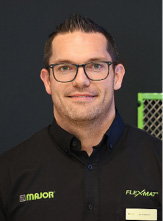
EDWARDS: The global supply chain disruptions and shortages experienced in various industries also had and continue to impact the aggregate sector. This for sure has been one of the larger more widespread challenges that all have continued to face and adapt to as we worked through 2023. Although we did see some improvements in availability and logistics, pricing remains a challenge on many fronts when working globally.
As we look toward 2024, factors like transportation issues, natural disasters, or geopolitical tensions might continue to disrupt the supply chain world and affect the availability of aggregates on a regional and national scale.
Has your company looked at incorporating artificial intelligence into your business operations? What are your thoughts?
VILLERE: We believe the tools we use in our valuation and CRM software will continue to evolve and employ AI to help refine our processes
TEAGUE: AI is something that our R&D team is actively exploring. I think all businesses should be open to explore new technology that allows companies to be more effective, efficient and improve the customer experience.
HOLUB: As of now, we have not incorporated AI into our business operations. We have updated our production facilities with new technology, computerizing production where it has made sense in order to maximize our production quality.
KILMURRAY: Yes, unexpected downtime is a huge source of lost revenue for producers, so we aim to create products and technology that prevent that. Pulse condition monitoring, the newest system added to our Pulse portfolio, is designed to monitor the health of vibrating screens using modern algorithms and AI.
The system uses permanently installed sensors to monitor equipment 24/7, capturing real-time information on monitored equipment and providing alerts by email when it detects the first sign of potential problems.
By constantly monitoring the accelerations of the vibration screen, Pulse condition monitoring provides a forecast of the equipment’s dynamic condition in intervals of 48 hours, five days and four weeks. The system detects anomalies that point an operation’s maintenance team to specific areas of the equipment that may require attention.
KRAUSE: We have used AI for some limited items, but I would not say that we have utilized it to any great extent within our operations.
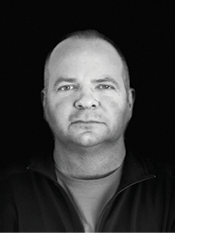
BOARDMAN: We have leveraged AI for nearly a decade to automatically identify and remove obstructions from stockpiles such as haul trucks, loaders, equipment, vegetation and more. The rate of innovation in this space over the last two years has been overwhelming. Rather than build machine-learning models ourselves – there are now a variety of open source and low cost solutions that can leveraged and deployed immediately. I expect AI to have a massive impact on the aggregates industry over the next five to seven years with respect to automation and optimization.
EBERLE: No, not yet. It’s something we are keeping an eye on. As the technology becomes more accessible, I can see it having a big impact on how we do business.
KANARIS: To date, we have not incorporated artificial intelligence into our business. However, if AI becomes more beneficial for our operations in the future, we will then take it into consideration.
SWANK: I certainly think there is a place for AI in the aggregates industry and manufacturing. Earlier this year, we saw news of the automated Luck Stone quarry and that spurred the conversation even further. All of our custom haul truck equipment is compatible with autonomous haul trucks. On the other hand, I think there are areas where sometimes the latest technology doesn’t translate to the best option for operators. For example, our water tank controls are all pretty basic compared to other options on the market that have touch screens and all the latest technology in them. This design is on purpose – not because we don’t believe in technology, but because we know firsthand from our clients that they prefer analog controls and being able to operate with gloves on or use knuckles to press a button rather than taking gloves off to be able to work with a touch screen.
We find ourselves in challenging geopolitical times. Have the various overseas conflicts impacted your business?
SWANK: The good thing about working in the industries we do is that pretty much no matter what, people will always need stone, sand and gravel. Whether the aggregate is being used to build hospitals, roads or in the many other applications it has, the industry never completely stops. One way that we’ve actually gotten more involved in supporting the industry is through advocacy events with the National Stone, Sand and Gravel Association. Recently, Danette, my wife and president of Philippi-Hagenbuch, and I traveled to Washington, D.C., to visit with our Congress members on behalf of Philippi-Hagenbuch and the aggregates industry as a whole. Aggregates are the bedrock for civilization, and we are proud to be a part of this great industry.
KRAUSE: Because we are a global company the geopolitical issues can affect us in different ways. For our operations here in the United States, I don’t think we have really been affected by these issues. I do believe that economic as well as political issues are affecting business levels in the UK and Europe, especially Eastern Europe. As of this writing the Middle East is certainly out of the conversation about any business. I do feel that our China business is affected by events within China.
BURNS: Since we operate globally, we are mindful of the situations that can affect our customers and supply chains as a result of these conflicts. Thus far, we have been fortunate that this hasn’t created any significant impacts to our business. With a very strategic global footprint, we have been able to manage our sourcing efforts and provide timely responses to mitigate impact.
EBERLE: Many industries like the coal and metals industries are affected more than aggregates by geopolitical changes. Aggregates and domestic infrastructure demand will remain strong.
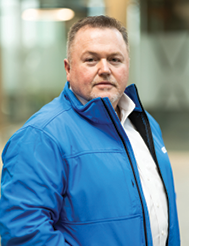
TEAGUE: As a global company, CDE does feel impact from all regions around the world; both good and bad. Being a global company allows us to be diversified and direct resources where they are needed most. When one region may be down, others are at the top. Overall, it makes us a stronger more stable company.
GARRISON: The geopolitical landscape, particularly Russia’s invasion of Ukraine, prompted us to discontinue business in Russia. Russia had been a very active market for us. While other overseas conflicts have not directly affected our business as of now, we recognize the dynamic nature of global events. We’ve learned that external factors beyond our control can swiftly alter business conditions. Remaining adaptable is always priority for us.
HOLUB: The current world conflicts have impacted businesses all over the globe by disrupting operations, affecting supply chains and creating higher costs. With all of our manufacturing taking place in India, we have been affected less than most. The cost of raw materials necessary for producing tires has increased worldwide. To combat increasing prices, BKT has started to manufacture our own carbon black (a major ingredient in manufacturing tires). This reduces cost and increases quality.
KANARIS: Fortunately, the geopolitical uncertainties have not impacted our business in any way.
How do you expect the industry to perform in 2024?
EDWARDS: Based on what I have seen in 2023, I expect to see a continued investment in infrastructure. With this, we should see an increased demand for aggregates in construction, road building, and other infrastructure-related activities. Although we know interest rates and lending will continue to play a role on this front. On a global scale, with the continued growth in population, the need for more infrastructure will continue.
Additionally, I expect to see the adoption of advanced technologies such as automation, IoT, and data analytics as more and more companies learn and understand the enhanced efficiency, safety, and productivity they provide.
Overall, the performance of the aggregate industry in 2024 will depend on a combination of these and other factors, as well as regional and global economic conditions. Businesses in our industry need to stay adaptable, innovative, and well-informed to navigate potential challenges and capitalize on opportunities as they arise.
KRAUSE: We see continued strength and optimism in the industry for 2024. Not sure that it will be great growth in terms of total aggregate usage, but levels similar to 2023 are expected. We always want 5% to 10% growth year over year, but for 2024 I believe everyone will be happy if we just have a repeat of 2023. That would mean solid volumes with consistent pricing which is something we can contribute to the IIJA as well as other spending on infrastructure. Those of us that travel quite a bit are very happy to see the improvements at many of our major airports which is also benefiting from the IIJA.
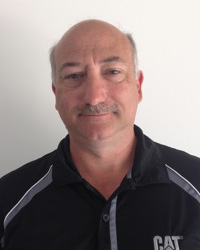
HURDIS: When customers are asked this question, I generally hear, “Not really sure yet” responses. It appears the unknown conditions of the construction market, mortgage interest rates, infrastructure funding and new project awards bid-letting are a concern and are being watched closely by producers.
EBERLE: It’s too early to tell, but we are forecasting flat. We are hopeful that interest rates will lower, spurring more housing and tax revenue for infrastructure.
GARRISON: We are optimistic about 2024, given our robust backlog of orders already booked for the year. This includes stock orders from numerous dealers covering the full year, along with significant commitments for construction and turnkey projects. Barring any unforeseeable issues, we anticipate that 2024 will surpass the achievements of 2023. The strong demand reflected in our order backlog and the continuation of various projects underscore a positive outlook for the industry.
KANARIS: Although the economic uncertainty is expected to continue through 2024, based on the performance in the aggregate and mining sectors we had in 2023, we expect to see a slight increase. All other industry sectors that we serve are expected to be the same as in 2023.
SWANK: We are optimistic about the aggregates industry heading into 2024. The transportation bill has inspired a lot of confidence in aggregate producers to move forward with long-term planning as they see the steady level of funding heading for our nation’s infrastructure. Certainly, we will keep a close eye on interest rates and how that will affect commercial development and construction, especially approaching 2025, but in general we expect 2024 to be similar to 2023. While unrest in various parts of the world could have an impact on the economy and demand for raw materials, we believe that overall, the conditions are right for a strong and steady year in 2024.
HOLUB: We expect the aggregate market to slowly increase in 2024. The passing of the infrastructure bill should continue to gather momentum and, hopefully, interest rates will come back down and free up spending.
KILMURRAY: I expect that continued federal funding for roads and infrastructure as well as an increasing demand for raw materials will drive this anticipated growth for the industry.
BURNS: While it is difficult to predict, we are looking forward to 2024 as a productive year. While it may be too early to tell, there is some indications that the industry’s equipment supply is catching up to demand and we could see a return to “normal” with regards to purchasing behaviors, more in line with previous years. We still have a very positive outlook for next year and have been making investments in our business to support quicker lead times and availability, while focusing on providing the best experience for the customer.
Do you expect to participate in the AGG1 show and MINExpo next year? Will you be introducing new products?
BOARDMAN: Stockpile Reports is excited to return to AGG1 in 2024. We will be showcasing our first-quarter release of the ability to measure materials stored in bunkers in real time with an iPhone. In early tests with customers we are receiving feedback that this will be very well received by the ready mix industry.
KRAUSE: We are participating in both AGG1 and MINExpo with expanded booth sizes so we can highlight some new products that we have. We see both of these shows as a popular way to reach a vast array of customers. The popularity of the shows highlights the optimism in the industries as well as a desire for product and process knowledge and learning.
On the aggregate side we will be highlighting our continued push in C&D Recycling both wet and dry. At MINExpo we will be showcasing our new Mineral Sizer and Feeder Breaker lines as well our improved apron feeder offering.
VILLERE: We will be presenting at AGG1 on our vision for the economy.
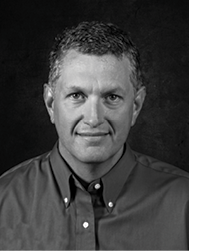
EBERLE: We will be at AGG1 and MINExpo and look forward to showing off some new products we have been developing.
GARRISON: Yes, Superior is excited to participate in both AGG1 and MINExpo International next year. Specifically, attendees can anticipate the unveiling of new and expanded sizes of crushers. Our booth will feature a range of new conveyor components, including excited advancement in conveyor idler design and manufacturing.
HOLUB: BKT will be attending both the 2024 AGG1 and MINExpo.
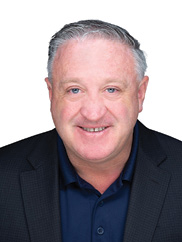
KILMURRAY: Absolutely! We will be participating in both events and encourage you to stop by our booth to visit with our team about your screening challenges and goals. During AGG1, we will be on an education panel entitled “Minimizing Downtime and Maintenance,” which will include perspectives from a range of equipment manufacturers in the industry. We look forward to connecting with producers at each event!
EDWARDS: Yes, and we are excited to participate in both shows! Please visit our booth. Additionally, at AGG1, I will also be on an education panel entitled “Minimizing Downtime and Maintenance,” which will include perspectives from a range of equipment manufacturers in the industry.
BURNS: Yes, we will have a booth at AGG1. We will be looking forward to seeing and talking to customers. We do have several new and updated products slated to release in 2024 and we are excited to share these with customers at the event.
KANARIS: We are scheduled to exhibit at both mining and aggregate shows in 2024. We will be introducing the 500-hp drum motor with the oil cooler, as well as a new belt cleaner.
SWANK: Yes, please come visit us at both. At AGG1, I will actually be presenting in two different educational seminars – a panel, entitled “Minimizing Downtime and Maintenance,” which will include perspectives from a range of equipment manufacturers in the industry. Additionally, an aggregates producer and friend of mine, Clay Albright, will co-present with me for a session entitled “Maximizing Off-Highway Haul Truck Productivity.” We will also of course have a booth at both AGG1 and MINExpo and can’t wait for another opportunity to connect with current and prospective clients and other industry partners.
TEAGUE: We are delighted to confirm that we will be exhibiting at AGG1 in Nashville once again next year. We first exhibited at it in 2016 and since then the show has proven to be a great opportunity to meet with key professionals from the aggregates including our valued existing customers. Good part of our team will be in attendance to discuss some of our new product upgrades and offers.
HURDIS: Yes, Caterpillar will be participating in the AGG1 show and MINExpo. Will we be introducing new products, services, and technologies at these shows….you will have to attend to find out firsthand.
Please comment on anything that is impacting your business right now that you would like to bring up.
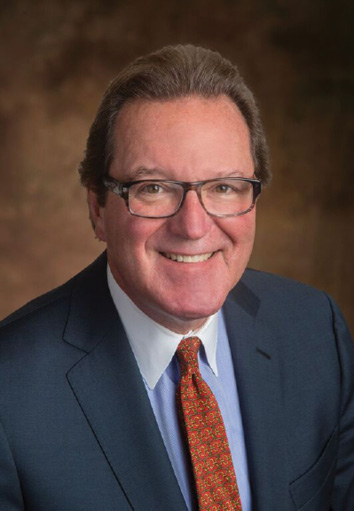
VILLERE: This is a bright environment for the mergers and acquisitions opportunities that exist in our industry nationally. We expect that to continue for the foreseeable future.
KANARIS: Today’s economic situation is impacting our business. We are still seeing American companies not supporting other American companies with their equipment purchases, which also impacts our business. We want to see a shift towards buying American-made products and equipment, supporting American businesses and jobs.
SWANK: At the end of every year, we always take time to reflect on how truly grateful we are to work in this industry and with the amazing team at PHIL and our clients around the world. We can’t thank all of you enough and we look forward to a great 2024!
